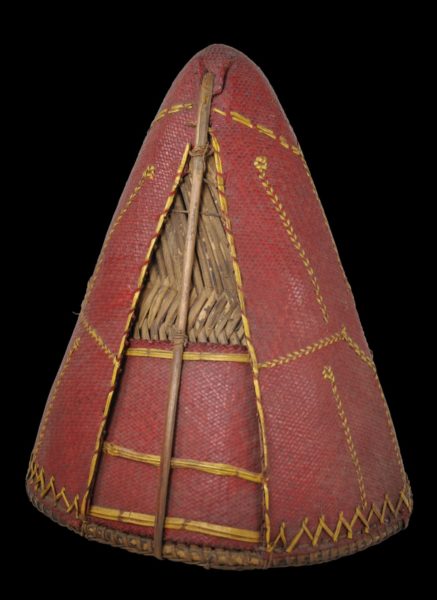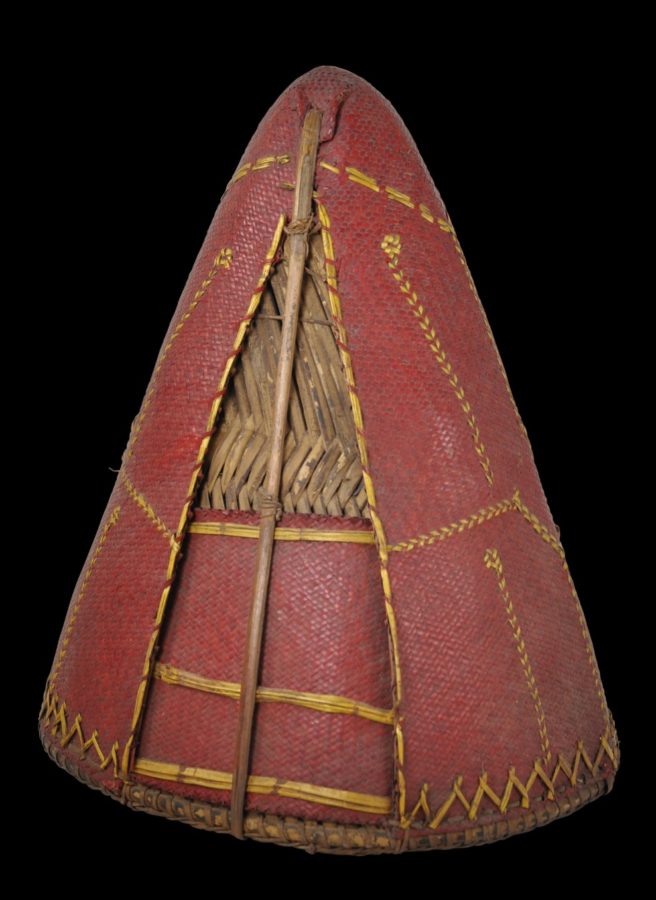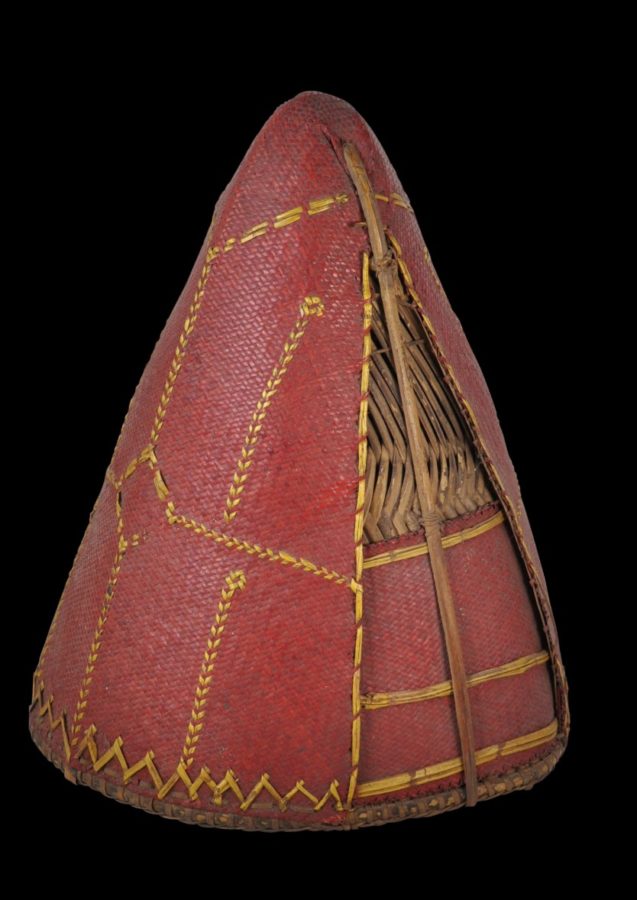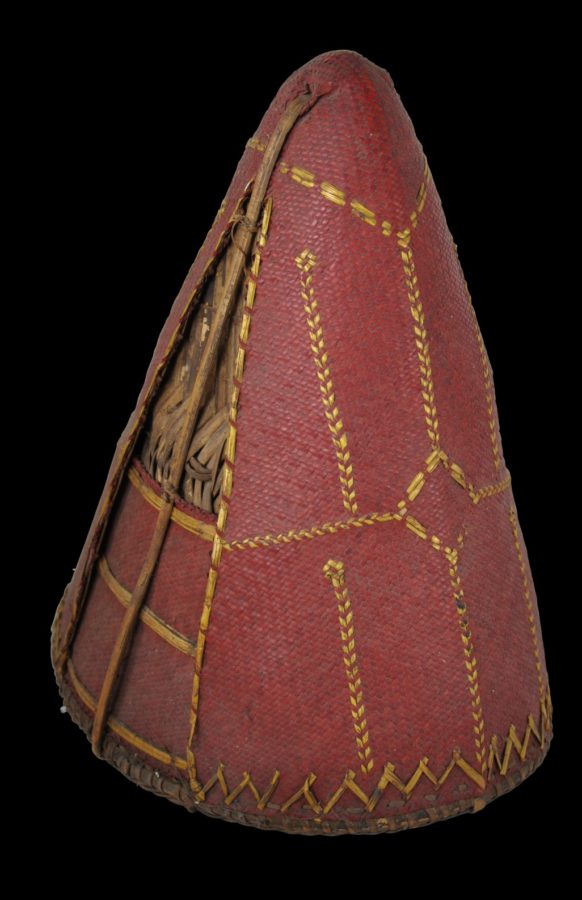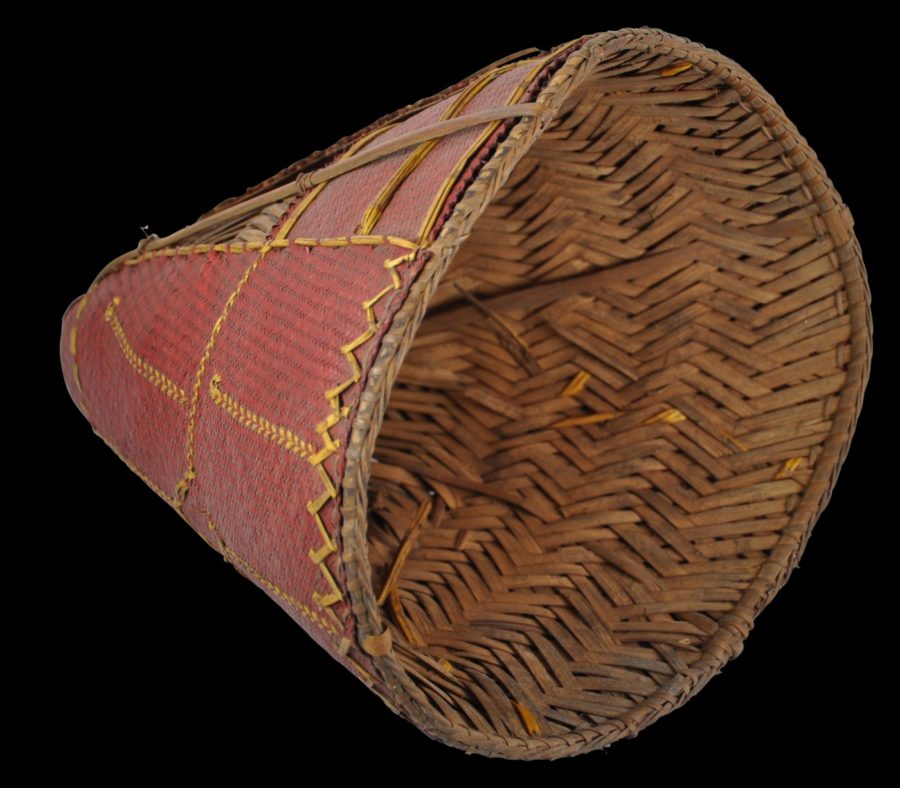Enquiry about object: 5728
Naga Man’s Cane Hat
Kalyo-Kengyu Naga People, Eastern India/Western Burma circa 1910
height: 25.5cm, diameter at widest point: 20cm
Provenance
private collection, UK; reputedly obtained by a family member just after WWI during skirmishes with the Naga tribesmen in Bangladesh and Burma.
This Naga man’s hat has a fine patina and clear age. It is of conical form and comprises a woven un-dyed cane base over which is fixed a mat of thin, red-dyed cane interspersed with the dried yellow skin of the orchid plant to create geometric patterns.
Hats such as these were not part of the everyday dress of a Naga man. They were worn on festive occasions along with copious jewellery and other body decorations.
The Naga people comprise a range of related tribes that inhabit the north-eastern India and north-western Burma. The form and relative lack of decoration of this hat suggests it is from the Kalyo-Kengyu Naga of western Burma. (Other groups wear similar hats but these can be embellished with dyed pair hair, tusks, and so on.)
This hat is in fine condition with few obvious losses. Its age is obvious.
An almost identical example is illustrated in Jacobs (1990, p. 225).
References
Jacobs, J., The Nagas: Hill Peoples of Northeast India, Thames & Hudson, 1990.
Saul, J.D., The Naga of Burma: Their Festivals, Customs and Way of Life, Orchid Press, 2005.


